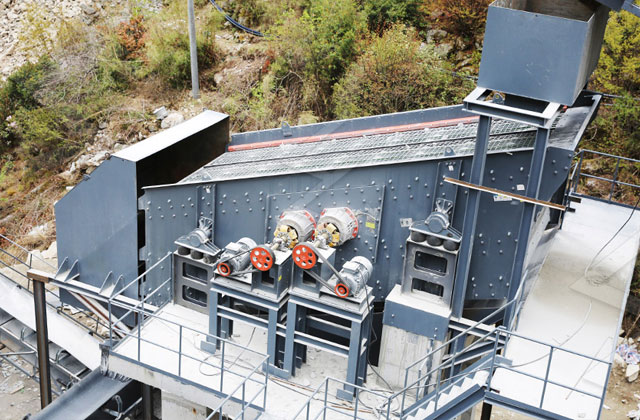A vibrating feeder is a crucial component in the mineral processing plant, playing a key role in the efficient and reliable handling of raw materials. Its primary function is to feed ore or raw materials evenly and consistently into various processing equipment, such as crushers, screens, and conveyors. This ensures a smooth and continuous flow of material throughout the mineral processing circuit, optimizing the overall efficiency of the plant.
The design of a vibrating feeder for a mineral processing plant takes into consideration various factors such as the type of material being handled, the required feed rate, and the characteristics of the processing equipment it feeds. The feeder must be robust enough to handle the harsh conditions often found in mineral processing environments, including abrasive materials, high temperatures, and heavy loads.

One of the key advantages of vibrating feeders is their ability to handle a wide range of materials, from fine powders to large chunks of ore. This versatility makes them suitable for feeding different types of processing equipment within the plant. The feeder is equipped with a vibrating mechanism that imparts controlled vibrations to the material, preventing it from sticking to the feeder walls and ensuring a consistent flow.
The vibrating feeder operates on the principle of mechanical resonance. The drive unit generates vibrations at a specific frequency, causing the feeder to vibrate at its natural frequency. This resonance amplifies the amplitude of the vibrations, facilitating the efficient movement of material along the feeder. The amplitude and frequency can be adjusted to match the characteristics of the material being processed and the requirements of the downstream equipment.
In mineral processing plants, the selection of the appropriate vibrating feeder is crucial for achieving optimal performance. Factors such as the size and nature of the material, the desired feed rate, and the layout of the processing plant all influence the choice of feeder type. Common types of vibrating feeders include electromagnetic feeders, electromechanical feeders, and direct-drive feeders, each with its own set of advantages and applications.
Electromagnetic vibrating feeders use electromagnetic coils to generate vibrations, making them suitable for precise and controlled feeding of fine materials. Electromechanical feeders, on the other hand, use mechanical vibrations generated by eccentric weights attached to a motor. These feeders are robust and well-suited for heavier materials and harsh operating conditions. Direct-drive feeders utilize an electric motor directly coupled to the feeder tray, eliminating the need for belts or gears and ensuring a more straightforward and reliable operation.
The benefits of using vibrating feeders in mineral processing plants are numerous. They improve the efficiency of downstream processing equipment by ensuring a consistent and controlled feed, reducing the risk of blockages and downtime. Additionally, vibrating feeders contribute to energy savings by optimizing the use of power and minimizing waste.


